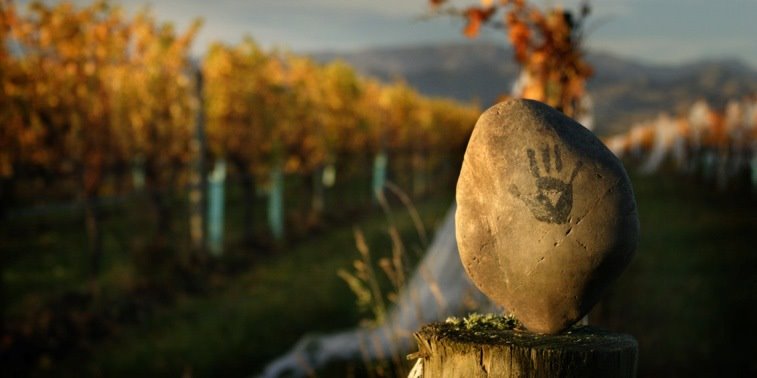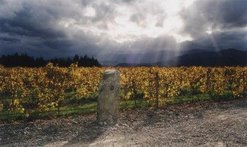A cowpat pit (CPP), also known as 'barrel compost', is a fermentation of cow manure, assisted by the biodynamic preparations. It is essentially a process to convert the manure into beautiful compost that contains concentrated amounts of fungi, bacteria and the energies from the biodynamic preparations. There are many variations on how to make CPP, but here's a peek into how we do ours here at Seresin Estate.
It all begins with a good supply of cow manure, fondly referred to as moo poo, preferably from lactating cows. The best way to do this is have your own dairy cows, but in the absence of that at the moment we were able to get some brilliant manure from a dairy farm in Linkwater on the north coast of the South Island to mix in with a bit from our biodynamic cows. The next key

ingredient is some willing volunteers to help do the mixing - on this day in December, we had lots of help from Clive, MJ, Jan and Colin. With about 60kg of manure loaded into a trailer, we mixed it with shovels by turning it from one side of the trailer to the other for about one hour. It has been said that it takes 40 minutes to deprogram the manure and then 20 minutes to reprogramme it. While mixing, we gradually add in powdered egg shells (that we dried and ground) - about 200g per pit, or a total of 4-5 half shovels, and basalt dust - around 300g per pit, so 5-6 half shovels full in total. During the mixing the texture of the manure changes, becoming light and airy and then almost silky. You can tell when you are done purely by the changes in texture that have occurred.
While the mixing is being completed, we wet down our pits and get the preparations ready.

We like to use balls of CPP from a pit that is fully decomposed as the vehicle for the preparations, to pass on some of the goodness they've got. So we make small balls with an indent large enough to fit about a teaspoon of preparation in, which is then squeezed closed. One ball per preparation per pit, for 502 (yarrow), 503 (chamomile), 504 (stinging nettle), 505 (oak bark), 506 (dandelion). Preparation 507 (valerian) is diluted (around 75ml into 2L of water) and re-energized by stirring it with a stick in a bucket for 15 minutes, creating vortices in opposite directions every 30 seconds or so.
The fluffy, silky manure mix is then put into our pits, about 1 and a half bricks deep, and the top

is smoothed over. We put 5 holes into the smoothed top, deep enough to place the preparation balls in. Since all of these preparation have been made in the organs of animals, it can be seen that this action is like placing the organs back into this substance to create a new living organism. We then sprinkle the pit with the valerian solution, by hand. The pits are then covered with hessian sacks that we have stuffed with straw or wool. Another little sprinkle of valerian and then they are left to do their thing for 4 weeks. At that time, we'll uncover them and turn them with a pitchfork to aerate them. After that, they'll be turned about every 2 weeks until they are ready. This helps to not only aerate the CPP but also to maintain a more even moisture level through the pit.
Once the CPP has fully matured we use it in our compost teas, seaweed sprays, cordon drenches, pasture sprays, Preparation 500 applications and compost heaps as an inoculuation of all the concentrated energies and living organisms. Spreading the love!

















.jpg)